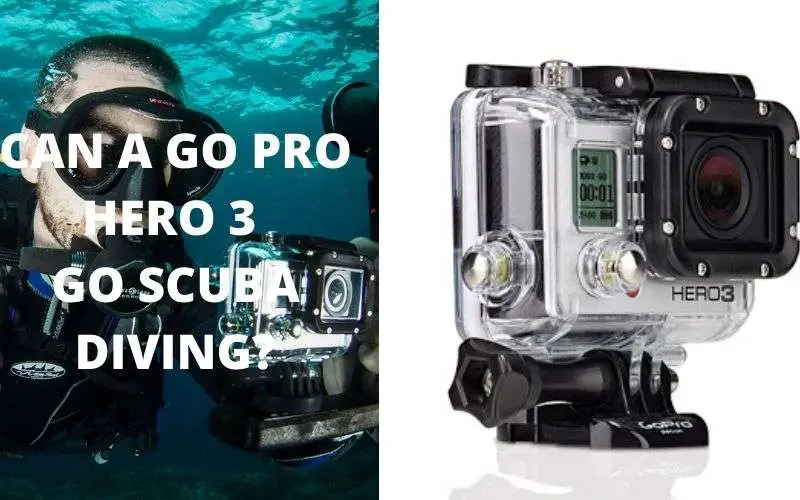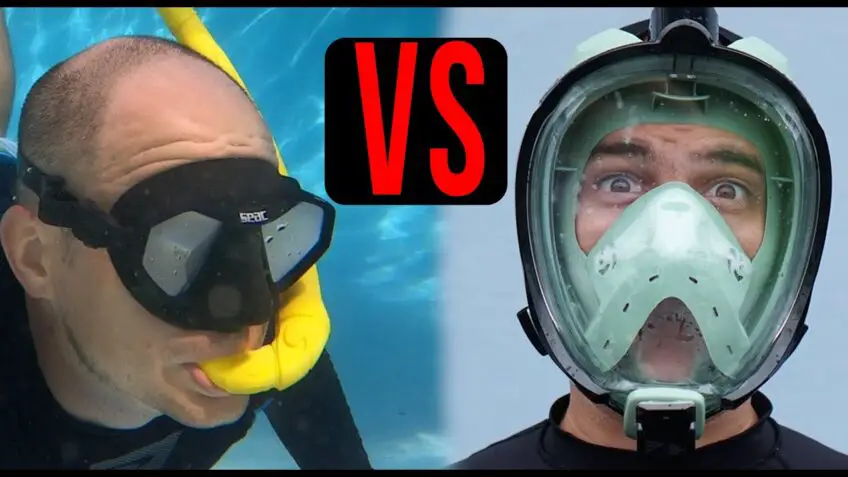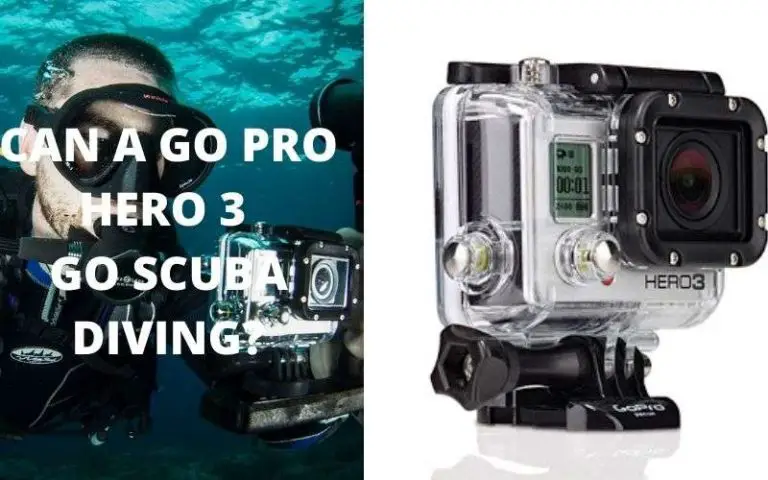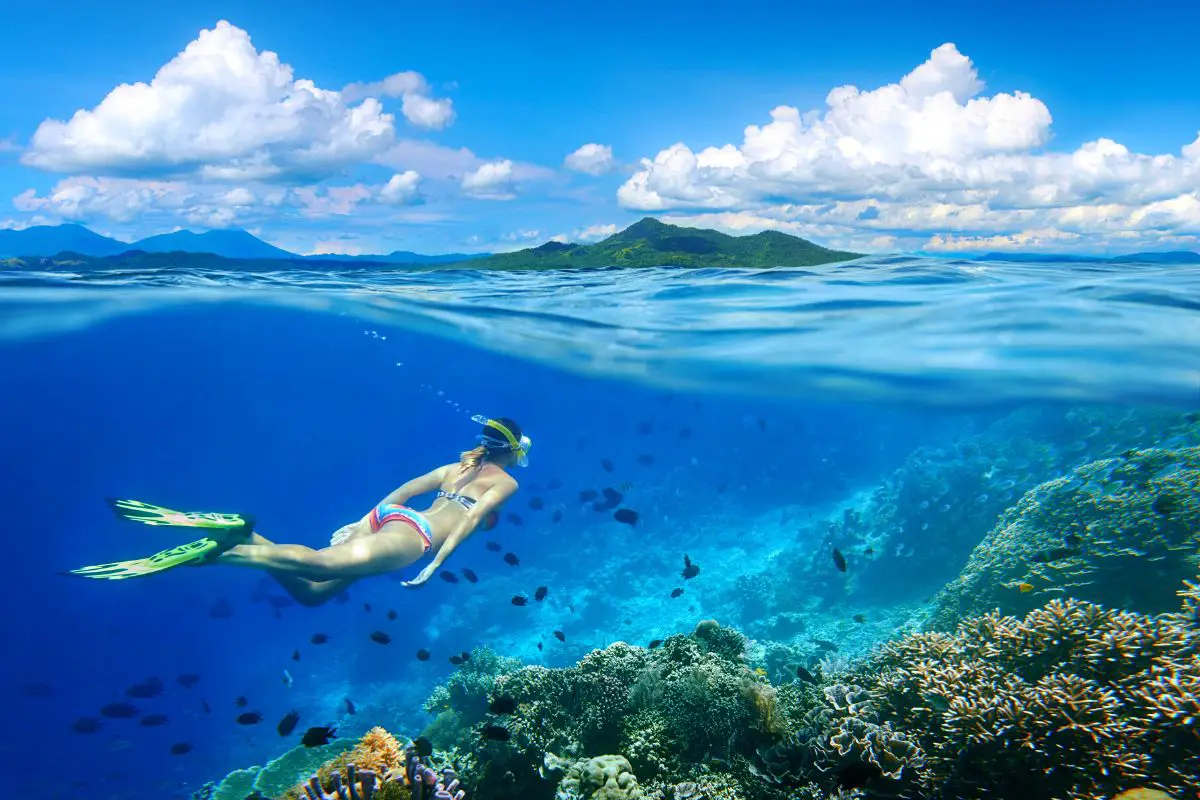
Snorkeling, often seen as a tranquil pastime enjoyed by travelers in tropical paradises, has long been categorized as a water sport. However, the question remains: Is snorkeling truly a sport, or does it fall into a distinct category of leisurely aquatic activities?
In this exploration, we will dive deep into the world of snorkeling, dissecting its characteristics, and uncovering its evolution into an extreme sport.
At its core, snorkeling typically involves floating on the water’s surface, equipped with a mask, snorkel, and perhaps fins, while marveling at the underwater wonders below.
This serene form of exploration often portrays snorkeling as a leisure activity rather than a sport. To classify snorkeling as a sport, we must examine various parameters, including physical exertion, competition, specialized venues, and structured rules.
Why does Snorkeling Fall Short of Being Labeled a Sport?
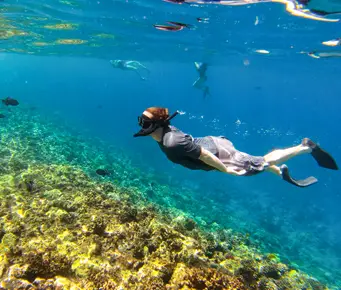
Traditional snorkeling, which we shall refer to as “recreational snorkeling,” is accessible and undeniably relaxing. Participants leisurely float, face down, breathing through a snorkel with unhurried breaths, savoring the beauty of the oceanic realm.
While some might occasionally perform a skin or duck dive to get a closer look at intriguing underwater sights, the level of physical effort remains relatively low. In fact, with minimal instruction, even non-swimmers can partake in snorkeling, provided they wear a life jacket.
This ease of access, coupled with the absence of competitive elements, raises doubts about whether snorkeling aligns with the conventional definition of a “sport.”
Snorkeling: A Sport or Hobby
To establish whether snorkeling qualifies as a sport, we turn to the Oxford Learner’s Dictionary, which defines a sport as an “activity that you do for pleasure and that needs physical effort or skill, usually done in a special area and according to fixed rules.”
When assessed against these criteria, snorkeling falls short in several aspects. While it undoubtedly provides pleasure and takes place in natural bodies of water, snorkeling’s requirement for physical effort or skill remains debatable. Even a novice can engage in snorkeling without substantial physical exertion or specialized skill sets.
Additionally, snorkeling lacks fixed rules and does not typically involve competitive elements or designated arenas. The absence of structured competition and scoring systems further differentiates snorkeling from traditional sports.
Furthermore, the notion of sports often entails a competitive aspect, whether as an individual endeavor or within a team framework. Competing against opponents, adhering to fixed regulations, and striving to achieve a defined winning condition contribute to the essence of sports.
However, snorkeling, in its conventional form, lacks these fundamental elements of competition and structured rules. Its leisurely nature caters to personal enjoyment rather than competitive rivalry, making it challenging to categorize as a sport.
Competitive Sports Derived from Snorkeling Activities
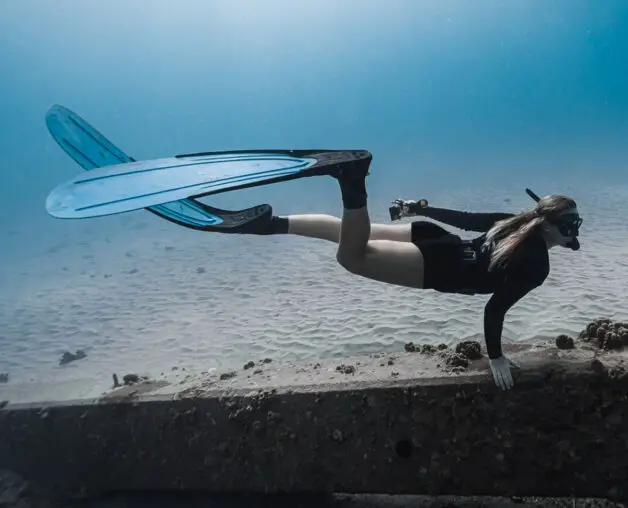
Despite the classification debate, snorkeling enthusiasts have pushed the boundaries of this serene activity, elevating it to the realm of extreme water sports. These snorkeling variations introduce competitive elements, physical challenges, and specialized rules, transforming snorkeling into bona fide sports.
Let’s delve into these exhilarating snorkeling sports that cater to adventure-seekers.
Freediving
Freediving is a high-intensity aquatic pursuit and stands out as one of the most extreme snorkeling sports. Governed by official organizations and characterized by record-breaking performances, freediving involves breath-hold dives to remarkable depths, setting it apart as a legitimate sport.
Athletes compete in various categories, such as Dynamic With Fins (DYN) and Constant Weight (CWT), demonstrating their endurance, resilience, and underwater prowess. While snorkeling, in its conventional form, embodies relaxation, freediving represents the epitome of underwater athleticism.
Spearfishing
Spearfishing is another snorkeling-derived sport, which combines snorkel gear with the art of capturing fish underwater. Spearfishing competitions are held regularly by dedicated clubs, emphasizing precision, accuracy, and breath-hold techniques.
These competitions are a testament to the fusion of snorkeling equipment with a competitive edge, making spearfishing a legitimate sport.
Underwater Football
Underwater football which is said to share similar characteristics as underwater rugby and underwater hockey provides further evidence that snorkeling can evolve into extreme sports. These sports take established land-based games and adapt them to underwater settings.
Players, equipped with masks, snorkels, and fins, maneuver within swimming pools while striving to score goals or points, combining the thrill of competition with snorkeling equipment.
Underwater Ice Hockey
The unconventional sport of underwater ice hockey pushes the limits even further. In underwater ice hockey, athletes play the game upside down beneath a frozen surface, navigating a puck that must remain positively buoyant.
While the sport aligns more closely with freediving, the use of snorkeling equipment underscores its connection to snorkeling-based sports.
Underwater Target Shooting
Underwater target shooting, a sport governed by CMAS, incorporates snorkel gear to challenge competitors’ speargun shooting skills.
Events are held individually or as a team, emphasizing precision and accuracy in hitting underwater targets. Despite its focus on shooting skills rather than traditional athleticism, underwater target shooting highlights the versatility of snorkel equipment in competitive sports.
Finswimming
Finswimming, which encompasses various techniques of swimming with fins, further demonstrates the adaptation of snorkel gear for competitive purposes. Athletes use monofins, bifins, or even snorkel-based swimming techniques to compete in events similar to traditional swimming competitions.
The inclusion of snorkeling equipment does not diminish the competitive nature of finswimming, highlighting its status as a sport.
Bog Snorkeling
Lastly, bog snorkeling adds a unique dimension to competitive snorkeling. Competitors race through bog channels, donning masks, snorkels, and fins, in a race against time.
While some participants engage in this sport for fun and may wear quirky costumes, others take it seriously, further illustrating the diverse ways snorkeling equipment can be integrated into sports.
Conclusion
Recreational snorkeling, characterized by leisurely exploration and relaxation, may not meet the stringent criteria typically associated with sports. However, snorkeling’s evolution into a range of extreme water sports has broadened its horizons.
These sports incorporate snorkeling equipment, introduce competitive elements, and demand specialized skills, unequivocally establishing them as legitimate sports.
While traditional snorkeling remains a cherished pastime for relaxation and underwater discovery, snorkeling enthusiasts have harnessed the equipment’s potential to create thrilling and competitive sports. These snorkeling-based sports offer a distinct blend of adventure, athleticism, and underwater exploration.
Ultimately, whether you perceive snorkeling as a leisure activity or an extreme sport, there is no denying its versatility and capacity to cater to a wide spectrum of aquatic enthusiasts. Whether you are a leisurely snorkeler or an aspiring underwater athlete, the world beneath the waves invites you to explore its wonders with or without the label of “sport.”




